 Last additions - Hikone 彦根市 Last additions - Hikone 彦根市 |

View of castle grounds as seen from Ninomaru-Sawaguchi Tamon Yagura Turret. The Umaya Horse Stable is on the right.Jan 12, 2009
|
|

Entrance to Umaya Horse Stable. Open to the public, free admission.Jan 12, 2009
|
|

View of the Iroha road as seen from Ninomaru-Sawaguchi Tamon Yagura Turret.Jan 12, 2009
|
|

In front of Hikone Station, welcome banners for Hikone Castle's 400th anniversary in 2007 surround a statue of Ii Naomasa.Jan 12, 2009
|
|

Jan 12, 2009
|
|

Jan 12, 2009
|
|

Banner for the 150th anniversary of Lord Ii Naosuke opening Japan to the world.Jan 12, 2009
|
|

View of the other side of the rebuilt Ninomaru-Sawaguchi Tamon Yagura Turret (now a museum).Jan 12, 2009
|
|

The Ninomaru Sawaguchi Tamon Yagura (二の丸佐和口多聞櫓) has left and right buildings that used to be connected by a bridge-like Sawaguchi Gate in the middle. A yagura was a storehouse (for weapons, etc.) that had a small watchtower or turret.Jan 12, 2009
|
|

Jan 12, 2009
|
|

Iroha-matsu pine tree and banner.Jan 12, 2009
|
|

Originally built in 1622, the Ninomaru-Sawaguchi Tamon Yagura Turret is designated as an Important Cultural Property by the Japanese government. Part of it was rebuilt in 1960.Jan 12, 2009
|
|

Jan 12, 2009
|
|

Umaya Horse Stable. The only castle in Japan to have a large horse stable intact. The L-shaped building originally extended further toward Omotemon Bridge. Jan 12, 2009
|
|

Ceiling structure inside Ninomaru-Sawaguchi Tamon Yagura Turret.Jan 12, 2009
|
|

Umaya Horse Stable (Important Cultural Property).Jan 12, 2009
|
|

Ninomaru-Sawaguchi Tamon Yagura Turret with windows open.Jan 12, 2009
|
|

The rear of the left-side and original Ninomaru-Sawaguchi Tamon Yagura Turret, before being opened to the public.Jan 12, 2009
|
|

Inside Ninomaru-Sawaguchi Tamon Yagura Turret.Jan 12, 2009
|
|

Ninomaru-Sawaguchi Tamon Yagura TurretJan 12, 2009
|
|

During June 2008 to March 2010, the castle celebrated the 150th anniversary of Lord Ii Naosuke and the opening of Japan.Jan 12, 2009
|
|

Jan 12, 2009
|
|

Behind the Ninomaru-Sawaguchi Tamon Yagura Turret.Jan 12, 2009
|
|

Jan 12, 2009
|
|

Behind the horse stable and Ninomaru-Sawaguchi Tamon Yagura Turret in the background.Jan 12, 2009
|
|

Jan 12, 2009
|
|

Moat as seen from Ninomaru-Sawaguchi Tamon Yagura Turret. Iroha pine trees on left.Jan 12, 2009
|
|

Being open to the public from 2008, the Ninomaru-Sawaguchi Tamon Yagura Turret now has a stairway on the right. (Update: This stairway is gone and the public cannot enter this turret.)Jan 12, 2009
|
|

Shiromochi-kun marks the 400th anniversary of Lord Todo Takatora entering Tsu Castle in Mie Pref. Obviously resembling a stack of mochi rice cakes. This character was actually an inflatable plastic balloon. シロモチくん (三重 津市)Nov 01, 2008
|
|

Dotaku-kun from Yasu, Shiga. Modeled after Japan's largest ancient bronze bell discovered in Yasu. ドウタクくん (滋賀 野洲市)Nov 01, 2008
|
|

Jaguji, one of the more bizarre-looking mascots, is based on a water faucet. Promotes the Board of Water Supply in the Osaka city. じゃぐ爺 (大阪 大阪市)Nov 01, 2008
|
|

Kumokkuru was created by a flower project group in Shibuya, Tokyo. I thought it was a baby monster from a Godzilla movie. くもっくる (東京 渋谷)Nov 01, 2008
|
|

Wataru from Kobe, Hyogo promotes the three bridges crossing from Honshu to Shikoku. (Notice the car on the head.) I thought it was a piece of toast walking around. わたる (兵庫 神戸市)Nov 01, 2008
|
|

Yaoi-chan from a shopping arcade in Kita-ku, Kyoto. やおいちゃん(京都 京都市北区 御薗橋801商店街)Nov 01, 2008
|
|

Tawawa-chan promoting Kyoto Tower probably wishes that she could also smile. Also see my YouTube video here. たわわちゃん (京都 京都市)Nov 01, 2008
|
|

I thought this was another piece of toast walking around, and I think I was right. Name's Kawarakki to promote healthy meals for children, from Takahama, Aichi Pref. かわら食人 カワラッキー (愛知 高浜市)Nov 01, 2008
|
|

Pyuara promotes the waterworks bureau of Osaka city. Water droplet character. ぴゅあら (大阪 大阪市)Nov 01, 2008
|
|

Local-chan from Takatsuki, Osaka. A giant chili pepper?? ロコちゃん (大阪 高槻市)Nov 01, 2008
|
|

He wasn't in the guide book.Nov 01, 2008
|
|

Iga-gurio to promote Iga, Mie Pref. Surprised that's it's not a ninja character. いが☆グリオ(三重 伊賀市)Nov 01, 2008
|
|

Dennosuke plugging the Nipponbashi electronics district in Naniwa-ku, Osaka. There's a power cord on his back too. でんのすけ (大阪 大阪市浪速区)Nov 01, 2008
|
|

Another bizarre mascot was Papa-tako, an octopus from Akaishi, Hyogo Pref. パパたこ(兵庫 明石市)Nov 01, 2008
|
|

Yanagase Shopping Arcade booth.Nov 01, 2008
|
|

Jiimo-kun from Kita-Kyushu, Fukuoka. じーもくん (福岡 北九州市門司区)Nov 01, 2008
|
|

Another cutie is Mimi-chan from Minami-ku, Sakai, Osaka Pref. A female flower promoting Minami-ku. Notice the bee on her forehead. みみちゃん (大阪 堺市南区)Nov 01, 2008
|
|

Aoi-kun from Aoi-ku, Shizuoka. あおいくん (静岡 静岡市葵区)Nov 01, 2008
|
|

Iga city PR booth passing out tourist pamphlets.Nov 01, 2008
|
|

Tanemaru looks like a seed sprouting two leaves while in a boat. Mascot for Yokohama Port's 150th anniversary of its opening in 2009. 横浜開港150周年記念事業「たねまる」Nov 01, 2008
|
|

Caffy, mascot for Sports Recreation Shiga 2008. It was his final appearance, but he has been resurrected in March 2009 to serve as another official mascot of Shiga Prefecture. キャッフィー(滋賀)Nov 01, 2008
|
|

Mamyu from the Kyoto International Manga Museum. He wears a pen on his head. About his name, "Ma" is manga, and "myu" is for museum. マミュー (京都 京都市)Nov 01, 2008
|
|

Mimi-chan minus the body.Nov 01, 2008
|
|

Sagawan (little sister) is the cutest of the bunch, promoting the Sagawa Art Museum in Moriyama, Shiga. さがわん3兄弟(妹)(滋賀 守山市)Nov 01, 2008
|
|

Other animals included a racoon dogNov 01, 2008
|
|

Hiko-chu from Hikone. A Koga ninja mouse. Notice the shuriken on his left. Its creator seems to have been influenced too much by Mickey. ひこちゅう (滋賀 彦根市)Nov 01, 2008
|
|

Ogoton for promoting Ogoto Onsen Spa in Otsu, Shiga. His hairs represent the hot spring's steam. おごとん (滋賀 大津市雄琴温泉)Nov 01, 2008
|
|

Two crab mascots to promote Kasumi, Hyogo Pref. On the left is Matsuba-kun (male, wearing a blue cap), and on the left is Kasumi-chan, a female crab with a yellow ribbon. Not sure if they're married. Crabs are a major product of Kasumi.松葉くん (�Nov 01, 2008
|
|

Bird mascots were also numerous, like Unagappa from Tajimi, Gifu Pref. うながっぱ (岐阜 多治見市)Nov 01, 2008
|
|

Sagawan actually has two other siblings. she's the cute little sister.Nov 01, 2008
|
|

Trippy from Tottori Pref. トリピー (鳥取県)Nov 01, 2008
|
|

Vivace-kun is a beaver promoting Viva City shopping mall in Hikone, Shiga. ビバッチェくん (滋賀 彦根市)Nov 01, 2008
|
|

Saba-tora Nana-chan is a cat with stripes from mackerel (saba). See the fish in her pouch. Promote Obama in Fukui Pref. さばトラななちゃん (福井 小浜市)Nov 01, 2008
|
|

Habatan is phoenix from Hyogo Pref. to promote a national sports meet. はばタン (兵庫)Nov 01, 2008
|
|

The crowd at its thickest.Nov 01, 2008
|
|

Dogs were fewer than cats. Kurawanko from Osaka. Based on the local dialectical word "Kurawanka" (Wanna eat?). くらわんこ (大阪 枚方宿鍵屋浦)Nov 01, 2008
|
|

Hiko-nyan did not walk around the road. He only appeared on stage as an "escort" for the mascots being introduced every 15 min. all day.Nov 01, 2008
|
|

Zoom-in.Nov 01, 2008
|
|

Shimasako-nyan, a cat based on one of Ishida Mitsunari's retainers. しまさこにゃん、ひこね「街の駅」寺子屋 力石マスコットキャラクターNov 01, 2008
|
|

TigerNov 01, 2008
|
|

After the stage appearance, Sento-kun appeared in front of his PR booth on the street. A huge crowd again formed to see him.Nov 01, 2008
|
|
|

Another dog, Karawan-kun to promote castle town Karatsu, Saga Pref. 唐ワンくん (佐賀 唐津市)Nov 01, 2008
|
|

Hiko-nyan, the King of yuru-characters in Japan, and Tawawa-chan.Nov 01, 2008
|
|

Sento-kun in front of his PR booth ogled by a large crowd. We couldn't touch him.Nov 01, 2008
|
|

Introducing Sento-kun.Nov 01, 2008
|
|

Sento-kun was controversial because people thought the deer antlers were an insult to the Buddha. This controversy has ironically made this mascot the most popular and famous.Nov 01, 2008
|
|

Cat mascots were numerous.Nov 01, 2008
|
|

"So what do you think of Sento-kun?" This event made news headlines on TV and in the newspapers.Nov 01, 2008
|
|

Sento-kun, a boy priest with deer antlers to promote the 1300th anniversary of Nara. せんとくん (奈良 奈良市)Nov 01, 2008
|
|

Yanana was the weirdest and least mascot-like. It's actually a mermaid and she danced around the place, shaking her hips. Promoted Yanagase Shopping Arcade in Gifu city. Her head is shaped like an arcade. やなな (岐阜 岐阜市柳ヶ瀬商店街�Nov 01, 2008
|
|

A tall Tsunuga-kun from Tsuruga, Fukui Pref. To celebrate the Tsuruga's 100th anniversary of its port opening. The mascot is based on a Korean prince. Many ships plied between Tsuruga and the Korean Peninsula. ツヌガくん (福井 敦賀市)Nov 01, 2008
|
|

The main draw by far was Sento-kun from Nara. The place had two small stages where they introduced each mascot. A huge crowd gathered to see Sento-kun appear on stage.Nov 01, 2008
|
|

PR booth for Sento-kun and Nara.Nov 01, 2008
|
|

Everyone snap away with their camera phones when Sento-kun got on stage.Nov 01, 2008
|
|

Who's this baby wandering around Yonbancho shopping center?Nov 01, 2008
|
|

A baby sumo wrestler?Nov 01, 2008
|
|

Tabi-maru. a traveler character from Kusatsu, Shiga. Kusatsu was a crossroads on the old Tokaido and Nakasendo Roads where many travelers lodged. "Tabi" means "travel." たび丸 (滋賀 草津市)Nov 01, 2008
|
|

Chikamon-kun from Sabae, Fukui Pref. Modeled on Chikamatsu Monzaemon for his 345th birthday. ちかもんくん (福井 鯖江市)Nov 01, 2008
|
|

Humanoid mascots were the most numerous. This is Chacha-hime, based on the eldest daughter Chacha (later Lady Yodo-dono) of Lord Azai Nagamasa and Oichi (sister of Oda Nobunaga) who lived in Odani Castle in Kohoku-cho. 茶々姫Nov 01, 2008
|
|

Toshinaga-kun to promote the 400th anniversary of Takaoka, Toyama Pref. Based on Lord Maeda Toshinaga. 利長くん (富山 高岡市)Nov 01, 2008
|
|

Yoemon-kun, the mascot for the 400th anniversary of the birth of Confucian scholar Nakae Toju from Takashima, Shiga Pref. よえもん君 (滋賀 高島市)Nov 01, 2008
|
|

Musubi-maru to promote tourism in Sendai, Miyagi Pref. Modeled after Lord Date Masamune. むすび丸 (宮城 仙台市)Nov 01, 2008
|
|

Kamon-chan is a princess created by students at Shiga Univ. for Ii Naosuke and the 150th anniversary of Japan's opening to the world. カモンちゃん (滋賀 彦根市)Nov 01, 2008
|
|

Namu-kun from Nara to celebrate the 1300th anniversary of Nara. "Namu" is based on "Namu Amida butsu" and "Namu Horengekyo." なーむくん (奈良 奈良市)Nov 01, 2008
|
|

Namu-kun is modeled after Shotoku Taishi who introduced Buddhism to Japan. Created by a Buddhist association in Nara in opposition to Sento-kun (see below). But Namu-kun and Sento-kun played together at this festival in peace.Nov 01, 2008
|
|

About 46 mascots showed up during the two days. I went on the first day. They are called "yuru-kyara" (ゆるキャラ) in Japanese which means "loose characters." (Don't ask me what that means.)Nov 01, 2008
|
|

Otsu Hikaru-kun from Otsu, Shiga to promote the 1000th anniversary in 2008 of the novel Genji Monogatari written in Ishiyama-dera temple in Otsu. おおつ光ルくん (滋賀 大津市)Nov 01, 2008
|
|

On Oct. 25-26, 2008, the first Yuru-Kyara (Mascot Character) Matsuri was held on Yume-Kyobashi Castle Road in Hikone. This sign at Hikone Station points the way. MapNov 01, 2008
|
|

Yume-Kyobashi Castle Road was closed off to traffic for this festival. First they were going to hold the festival at a shopping center, but switched to this place after realizing how popular the event would be.Nov 01, 2008
|
|

The road was lined with PR booths for each mascot. They promoted products or tourism. The event saw about 46,000 visitors during the two days. The festival's official Web site is here.Nov 01, 2008
|
|

This road near the primary school is dubbed "Road for Greetings" (Aisatsu no Doro). I walked on this road and passed by a few kids, but received no hellos from them...Jun 03, 2008
|
|

Takamiya Primary School 高宮小学校Jun 03, 2008
|
|

Various high schools in Shiga, mainly from Hikone, participated in the tent exhibition.Jun 03, 2008
|
|

Created by Ibuki High School's art dept.Jun 03, 2008
|
|

徳性寺Jun 03, 2008
|
|

Jun 03, 2008
|
|

Jun 03, 2008
|
|

Jun 03, 2008
|
|

The art theme was "Lake Biwa: Life-giving Water." The show was from June 1 to July 20, 2008.Jun 03, 2008
|
|

The tent art was 170 meters long on the same road, stretching from the temple to Takamiya Primary School.Jun 03, 2008
|
|

Baikamo flowers of Samegai.Jun 03, 2008
|
|

An outdoor tent art show.Jun 03, 2008
|
|

"Lake Biwa: Life-giving Water"Jun 03, 2008
|
|

Jun 03, 2008
|
|

Lake Biwa fishesJun 03, 2008
|
|

Takamiya templeJun 03, 2008
|
|

Site of Takamiya Castle, now the Takamiya Primary School.Jun 03, 2008
|
|

Gate to Takamiya templeJun 03, 2008
|
|

Marker for Takamiya CastleJun 03, 2008
|
|

Takamiya templeJun 03, 2008
|
|

Takamiya temple's Hondo main hall 高宮寺Jun 03, 2008
|
|

View from the main hall of Enshoji.Jun 03, 2008
|
|

Enshoji temple in Takamiya-juku, Hikone.Jun 03, 2008
|
|

View from the main hall of Enshoji.Jun 03, 2008
|
|

Jun 03, 2008
|
|

The priest refused to cut down the pine tree. Turns out that Emperor Meiji did not mind walking around the tree to enter the temple.Jun 03, 2008
|
|

Main hall of Enshoji.Jun 03, 2008
|
|

On the right is a pine tree. A similar pine tree before this one was here when Emperor Meiji stayed over. An Imperial official told the temple to cut down the pine tree because it was a hindrance to the Emperor entering the temple.Jun 03, 2008
|
|

Path to Enshoji temple's main hall.Jun 03, 2008
|
|

Gate to Enshoji temple, established in 1498. It belongs to the Jodo Shinshu Hongwanji Sect. 円照寺Jun 03, 2008
|
|

Stone marker indicating that Emperor Meiji stayed here.Jun 03, 2008
|
|

Gate of the Honjin, the town's most exclusive lodge. The Honjin is gone, and only the gate remains.Jun 03, 2008
|
|

Enshoji temple was also where Emperor Meiji once stayed.Jun 03, 2008
|
|

A private house sits on the Honjin site.Jun 03, 2008
|
|

Nakasendo signJun 03, 2008
|
|

Lantern with Nakasendo Takamiya-juku written.Jun 03, 2008
|
|

Fureai no Yakata, a gift shop (closed)Jun 03, 2008
|
|

Nakasendo Road in Takamiya, near the Honjin (left) and Enshoji Temple (right).Jun 03, 2008
|
|

Kamiko Memorial has a piece of Haiku poet Basho's paper garment (his raincoat) buried here. 紙子塚Jun 03, 2008
|
|

Waki Honjin on the right.Jun 03, 2008
|
|

Site of the Waki Honjin on the right. 旧脇本陣Jun 03, 2008
|
|

Kamiko MemorialJun 03, 2008
|
|

Taga Taisha torii gate on Taga-michi road which goes to Taga Taisha Shrine in neighboring Taga town.Jun 03, 2008
|
|

Road to Taga Taisha Shrine from Takamiya-jukuJun 03, 2008
|
|

Signs next to the toriiJun 03, 2008
|
|

On the Nakasendo in TakamiyaJun 03, 2008
|
|

Nakasendo Road in Takamiya-juku, near the Taga-michi road.Jun 03, 2008
|
|

Nakasendo Road in Takamiya-juku, Hikone, Shiga Prefecture.Jun 03, 2008
|
|

Taga Taisha's first torii. Takamiya-juku was also the entry town to Taga Taisha Shrine in neighboring Taga town.Jun 03, 2008
|
|

Takamiya Post Office and a giant torii for Taga Taisha Shrine.Jun 03, 2008
|
|

Takamiya Shrine. On the Sunday closest to April 10, the shrine's spring festival is held with a procession featuring a giant taiko drum.Jun 03, 2008
|
|

House on the Nakasendo Road in Takamiya-juku which was one of the largest post towns. By 1843, the population was 3,560. There was one Honjin, two Waki Honjin, and 23 hatago inns.Jun 03, 2008
|
|

Nakasendo Road in Takamiya-juku, the sixty-fourth post town on the Nakasendo Road. It was famous for Takamiya Jofu hemp cloth. Near the Ohmi Railways Takamiya Station.Jun 03, 2008
|
|

Takamiya Shrine 高宮神社Jun 03, 2008
|
|

Ohmi Railways Takamiya Station platform. MapJun 03, 2008
|
|

The Takamiya Station building is also a Community Center with an information counter and exhibition space.Jun 03, 2008
|
|

Ohmi Railways Takamiya StationJun 03, 2008
|
|

Takamiya-juku was the sixty-fourth of the sixty-nine stations or shukuba post towns of the Nakasendo Road. Today, it has a few remnants of its Nakasendo past with a Honjin gate, Enshoji temple (where Emperor Meiji once stayed), and shrines.Ohmi Railways Takamiya Station. Looks like a shrine. 近江鉄道 高宮駅Jun 03, 2008
|
|

The first NHK Taiga Drama series in 1963 was called "Flowering Life" 花の生涯, based on Naosuke's life here in Umoregi-no-ya. This room shows scenes from that TV series.Jan 13, 2008
|
|
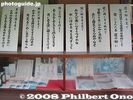
PoemsJan 13, 2008
|
|
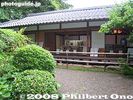
Jan 13, 2008
|
|
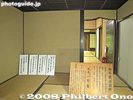
Tea ceremony roomJan 13, 2008
|
|
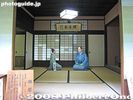
Living quartersJan 13, 2008
|
|
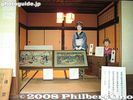
Two maids looked after Naosuke while he lived here.Jan 13, 2008
|
|
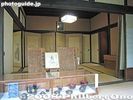
Jan 13, 2008
|
|
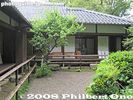
We can peer inside the rooms from outside, but cannot actually enter the building.Jan 13, 2008
|
|

Inside a palanquin.Jan 13, 2008
|
|
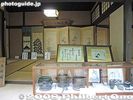
Umoregi-no-ya was restored from 1985 to 1991, costing 200 million yen. Subsidized by the Cultural Affairs Agency, the prefecture, and city. It is a Special National Historic Site.Jan 13, 2008
|
|

Palanquin. Did not say that Naosuke rode it.Jan 13, 2008
|
|

Inside a palanquin. Seat back cushion.Jan 13, 2008
|
|
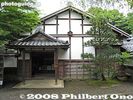
The house has a depressing name. "Umoregi" means petrified wood. Since he was far down the family line to succeed the lordship of his clan, Naosuke did not expect he his life would flower and thereby named this house. 埋木舎Jan 13, 2008
|
|
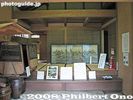
For tea ceremony, he was the one who coined the phrase "Ichigo Ichie," literally meaning one time, one meeting. It can mean, "happens only once." 一期一会Jan 13, 2008
|
|
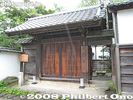
Umoregi-no-ya entrance.Jan 13, 2008
|
|
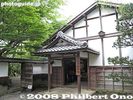
Naosuke bided his time studying and practicing the tea ceremony, flower arrangement, Zen, poetry, martial arts, and other arts.Jan 13, 2008
|
|

Inside Ohmi Railways Museum, rail gauges.Nov 19, 2007
|
|

Ohmi Railways Museum display panelsNov 19, 2007
|
|

Inside Ohmi Railways Museum, a pantographThis museum in Hikone closed and reopened inside Yokaichi Station in Higashi-Omi.Nov 19, 2007
|
|

Nov 19, 2007
|
|

Ohmi Railways trains on displayNov 19, 2007
|
|

Ohmi Railways Museum at Hikone Station east exit.Nov 19, 2007
|
|

Nov 19, 2007
|
|
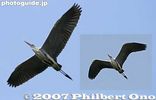
These heron birds make nests in Genkyu-en's trees.Jun 05, 2007
|
|
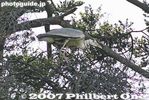
Nesting herons can be quite noisy in spring.Jun 05, 2007
|
|

A heron bringing back a branch to make a nest at Genkyuen Garden in Hikone, Shiga.Jun 05, 2007
|
|

Jun 05, 2007
|
|

Jun 05, 2007
|
|

Jun 05, 2007
|
|

Jun 05, 2007
|
|

Jun 05, 2007
|
|

Jun 05, 2007
|
|

Hikone Castle Moat Boat Ride PosterJun 05, 2007
|
|

Boat landing is near the entrance to Genkyu-en Garden.Jun 05, 2007
|
|

End of the 50-min. ride. It was pleasant, and highly recommended. Boat landing for the Hikone-jo Ohori Meguri boat ride is near the entrance to Genkyu-en Garden.Jun 05, 2007
|
|

Jun 05, 2007
|
|

Jun 05, 2007
|
|

The second yakata-bune boat. They referred to old drawings, etc., and carefully built the boat to resemble Edo-Era yakata-bune.Jun 05, 2007
|
|

Ready to pass under Otemon Bridge again.Jun 05, 2007
|
|
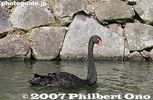
Black swan in Hikone Castle's moat, a gift from Mito in Ibraraki Prefecture.Jun 05, 2007
|
|

End of the moat. The moat once was connected to Lake Biwa, but not anymore since the lake's water level does not match the moat's water level.Jun 05, 2007
|
|

End of the moat. Lake Biwa is right beyond. This is where we make a U-turn.Jun 05, 2007
|
|

Jun 05, 2007
|
|

Castle towerJun 05, 2007
|
|

The boat includes a narrator who explains about the castle and moat and swans.Jun 05, 2007
|
|

Castle tower as seen from the moatJun 05, 2007
|
|

Jun 05, 2007
|
|

The next Otemon BridgeJun 05, 2007
|
|

Jun 05, 2007
|
|

Jun 05, 2007
|
|

A few of the stones in the wall are black. Some say those stones might have come from Azuchi Castle after it was burned to the ground.Jun 05, 2007
|
|

Otemon BridgeJun 05, 2007
|
|
|

The boat is powered by very silent, battery-powered outboard motors.Jun 05, 2007
|
|

Otemon BridgeJun 05, 2007
|
|

Jun 05, 2007
|
|

Going under Otemon Bridge. Wooden boards protect the bridge posts from the boat.Jun 05, 2007
|
|

Heading toward Otemon Gate/BridgeJun 05, 2007
|
|

Inside Japanese-style yakata-bune boat. Seats 11 people on tatami mats. The roof is very low. 彦根城お堀めぐりJun 05, 2007
|
|

Koedo Hikone NPO started operating "yakata-bune" Japanese-style boats in the moats of Hikone Castle as a tourist attraction for the castle's 400th anniversary in 2007. They operate 6 rides per day around the castle, taking 50 min.Boat landing for the Hikone-jo Ohori Meguri boat ride. Near the entrance to Genkyu-en Garden. They operate "yakata-bune" Japanese-style boats as a tourist attraction.Jun 05, 2007
|
|

It certainly gives you a different perspective of the castle as you see the moat, castle tower, and bridges from the water. The ride costs 1,200 yen.Jun 05, 2007
|
|

JR Minami Hikone StationMar 22, 2007
|
|

Viva City, a shopping mall and theater complex near Minami Hikone Station.Mar 22, 2007
|
|
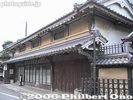
Main building of the Arikawa home, Toriimoto's most distinguished-looking building. This main building was built in 1759. The Arikawa family were a drug manufacturer. The home was designated as an Important Cultural Property in 2012.Nov 24, 2006
|
|
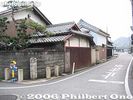
Road markerNov 24, 2006
|
|

Nov 24, 2006
|
|
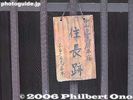
PlaqueNov 24, 2006
|
|
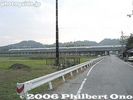
Nov 24, 2006
|
|
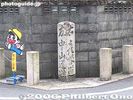
Road marker: Go left for the Nakasendo Road or right for the Hikone Road.Nov 24, 2006
|
|
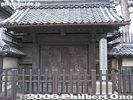
Yakuimon Gate at the Arikawa machiya home. Emperor Meiji rested at the Arikawa home. A family still lives in this home. 有川家住宅 薬医門Nov 24, 2006
|
|
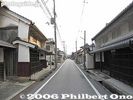
Nov 24, 2006
|
|
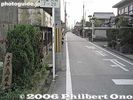
Nov 24, 2006
|
|
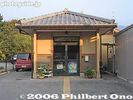
Police stationNov 24, 2006
|
|
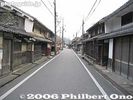
Nov 24, 2006
|
|
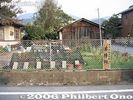
Site of Honjin LodgeNov 24, 2006
|
|
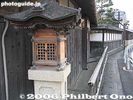
Nov 24, 2006
|
|
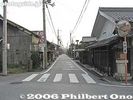
Nakasendo RoadNov 24, 2006
|
|

Nov 24, 2006
|
|

Ohmi Railways Toriimoto Station buildingNov 24, 2006
|
|

Toriimoto-juku is the sixty-third of the sixty-nine stations or shukuba post towns on the Nakasendo Road. It is the fourth Nakasendo station in Shiga (following Bamba-juku in Maibara), and one of ten Nakasendo stations in Shiga.Nov 24, 2006
|
|
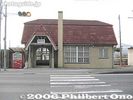
Toriimoto Station building built in 1931 when the station opened and still in use.Nov 24, 2006
|
|

Ohmi Railways Toriimoto Station buildingNov 24, 2006
|
|

Toriimoto-juku is the sixty-third of the sixty-nine stations or shukuba post towns on the Nakasendo Road. It is the fourth Nakasendo station in Shiga (following Bamba-juku in Maibara), and one of ten Nakasendo stations in Shiga.Nov 24, 2006
|
|

Ohmi Railways Toriimoto Station platformNov 24, 2006
|
|

Although the Honjin is long gone, there are a few reminders of its shukuba past. Near Ohmi Railways Toriimoto Station. MapNov 24, 2006
|
|

Hikone View Hotel, formerly known as Hikone Prince Hotel.Nov 24, 2006
|
|

Yume-Kyobashi Castle Road of shops near Hikone Castle. Shops look nice, but the road is busy with cars.Nov 24, 2006
|
|

Yonbancho Square shopping center 四番町Nov 24, 2006
|
|

Yonbancho Square shopping center 四番町Nov 24, 2006
|
|

Biwako Shuko no Uta song monument for Verse 5, three stone monuments.The song is about the boys rowing around Lake Biwa while mentioning famous places like Otsu (the starting point), Omi-Maiko (Omatsu), Imazu, Chikubushima, Nagahama, and Chomeiji.
Nov 24, 2006
|
|

Biwako Shuko no Uta song monument mapNov 24, 2006
|
|

Verse 5One of the verses mentions an "old castle" which most likely refers to Hikone Castle. This monument commemorates the song and that verse 5.Nov 24, 2006
|
|

Biwako Shuko no Uta song monument for Verse 5Another boat mate matched Oguchi's lyrics to the melody based on the old song called Water Lilies as modified by a young Chiaki Yoshida. It soon became a popular dormitory song.
The song became a national hit in 1971 when singer Tokiko Kato recorded it. Numerous famous Japanese singers and groups have since released cover versions of the song. The town of Imazu even holds an annual song contest in June when choir groups from around Japan sing the song in a competition. The town even has a museum dedicated to the song.Nov 24, 2006
|
|

Low-cost tourist shuttle busNov 24, 2006
|
|

Hikone Port for boats going to Chikubushima and Takeshima islands 彦根港Nov 24, 2006
|
|
| 1077 files on 5 page(s) |
 |
 |
4 |
|